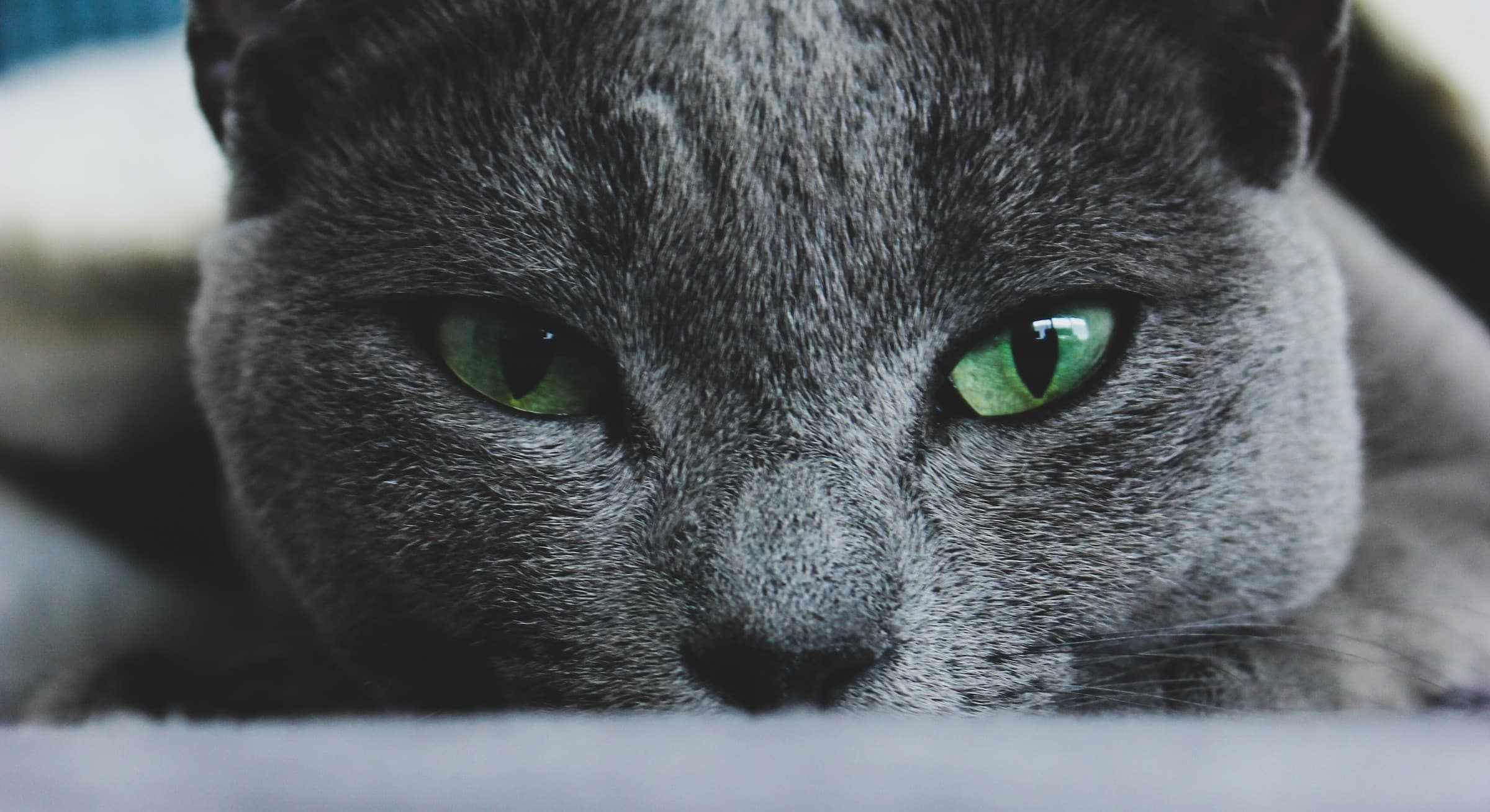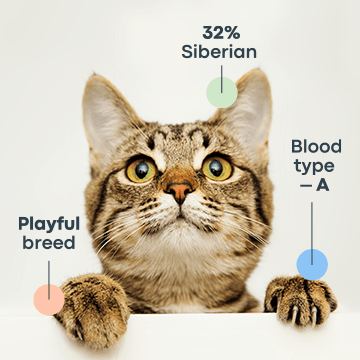Have you ever wondered why your Russian Blue pal continually follows you around, even to the ends of the earth? That is the Russian Blue cat personality. They are also known as Archangel Blues, but you might wonder who gave them that nickname. “Blue” is logical as they have dark blue fur, but why “archangel?” Researchers believe the Russian Blue cat originated from the city Archangel in northern Russia, hence the name Archangel Blues.
This cat has a personality worth studying because they are truly unique and extraordinary.
Russian Blue Cat Personality
The cat is a sweet-tempered breed that is independent, intelligent, and peaceful. As social pets, they are often pleasant and enjoy spending time with their families. Do not be shocked if, out of everyone in your home, your Russian Blue cat will always follow you around because they always have one favorite in the house, though this does not imply that they abandon the other family members.
The Russian Blue cat is not known for being clinging; they are independent but also quite sweet. Even though they are social animals, they are shy and reserved around new guests and prefer to be alone. They are a lively and playful breed that needs to be busy with activities to prevent mischievous behavior. The Russian Blue male cat personality is similar to the females; it all depends on whatever gender you like as a feline companion. They are also excellent hunters, capturing rodents, birds, rabbits, and mammals. If you want your Russian Blue cat to feel relaxed, create an area for them to curl up and take a quick nap.
Russian Blue Characteristics
The first thing that may catch your eye when you see a Russian Blue cat is their thick, velvety, and silky dark blue-gray double coat, with an undercoat so smooth that your fingers may easily slip through. As soft as the finest silk! You might develop a special attachment to them because of their vivid green eyes. Their paws are soft and pinkish-lavender or purple.

Russian Blue Cat Health Issue
According to PetMD, the Russian Blue cat is one of the healthiest cat breeds. Because these cat breeds occur naturally, they are very healthy cats with no genetic health concerns known. They may, however, be susceptible to some aging disorders, just like any other cat.
Kidney Disease
Kidney disease is one of the most common health problems in cats, and according to a Cornell Feline Health Center article. You may help your feline companion by always providing fresh drinking water. This way the cat’s kidneys can eliminate waste from the body more efficiently.
Obesity
Your Russian Blue cat has the potential to gain weight as a home buddy, especially if you do not expose them to activities that keep them agile. It may be tempting to give your feline buddy treats and meals all the time, but this will only affect their weight; instead, schedule a particular time when you feed your fur buddy. If your cat is obese, it can harm their joints and put them at risk for arthritis and other bone-related illnesses.
Thyroid disease
Although the causes of thyroid disease in cats are unknown, it does appear that eating foods containing thyroid-disrupting substances plays a role. Weight loss, increased appetite, vomiting, diarrhea, hyperactivity, and increased thirst and urination are some clinical indications of this disease. Seeking veterinary care is advised if your feline companion exhibits these symptoms.
Dental problems
To protect your feline buddy from a potential dental disease, ensure good dental hygiene. Brush your cat's teeth regularly with cat toothpaste (human toothpaste may be hazardous to cats).
Feline Lower Urinary Tract Disease
Urinary tract infections in cats can result from various factors such as infections, inflammations, food allergies, and behavioral problems. Some of the symptoms your kitty companion may exhibit are as follows:
Painful or difficult urination
Increased need to urinate
Crying while urinating
Вlood in the urine
Inappropriate urination—away from the litter box
While these are diseases your Russian Blue cat may be susceptible to, consult your veterinarian about any other potential illnesses to which your cat may be exposed.
Russian Blue Lifespan
"How long do Russian Blue cats live?" is probably a question on your mind. As a natural breed, Russian Blue lifespan is about 12-15 years, but there is a good chance your cat may live up to 25 years. Your Russian Blue cat will likely stay here for a long time.
Are Russian Blue Cats Aggressive?
The word "aggression" is not rooted in the Russian Blue personality. Although your feline pal might be very shy in the presence of visitors or strangers, this breed is exceptionally gentle, quiet, and kind. So, rest assured that this breed will not stress you out.
Top 7 Russian Blue Fun Facts
The eyes of a Russian Blue cat are yellow at birth, but they turn emerald green about four months of age as they mature.
Researchers believe the beautiful Russian Blue cat got its name 'Archangel Blues' from the city Archangel in Northern Russia—its place of origin.
Russian Blue cats are routine-oriented and dislike disruptions to their regular regimen, particularly about eating times.
The Russian Blue cat and the common Monalisa share one characteristic: they both have very expressive eyes and a charming, subtle smile.
Russian Blue cats are hypoallergenic, which means they are unlikely to trigger allergies, making them an excellent choice for persons who are allergic to cat fur.
Russian Blues have strong hunting instincts because they were wild cats before being domesticated. They are constantly on the lookout for prey.
Russian Blue cats are often highly healthy breeds that survive for up to 25 years because they are natural breeds.
Conclusion
Keeping a Russian Blue cat as a pet would enhance your elegance if you are a person of class. Royals hold this breed in high regard for its poise. Additionally, this breed is your best option if you are sensitive to animal fur and not sure about adopting a pet because they shed less and are very easy to groom.
Frequently Asked Question
Why are Russian Blue cats so special?
The physical attributes of Russian Blue cats, such as their purple paws, green eyes that are yellow at birth, and their velvety blue-grey fur, make them unique. They are also gentle and peaceful by nature.
Are Russian Blue cats cuddly?
Although they can be loyal to a single family member, this breed is not exactly known for being cuddly or clingy; instead, they are independent and want their own space.
Do Russian Blue cats have an attitude?
There could be underlying causes for your blue's harsh and attitude-filled behavior, such as a change in routine. Apart from that, the Russian Blue cat has a kind and affectionate disposition.
Do Russian Blue cats like to be alone?
The Archangel Blues are a particularly independent breed, perhaps even masters of their fate. They cuddle when they want to and keep their personal space when they want to.




